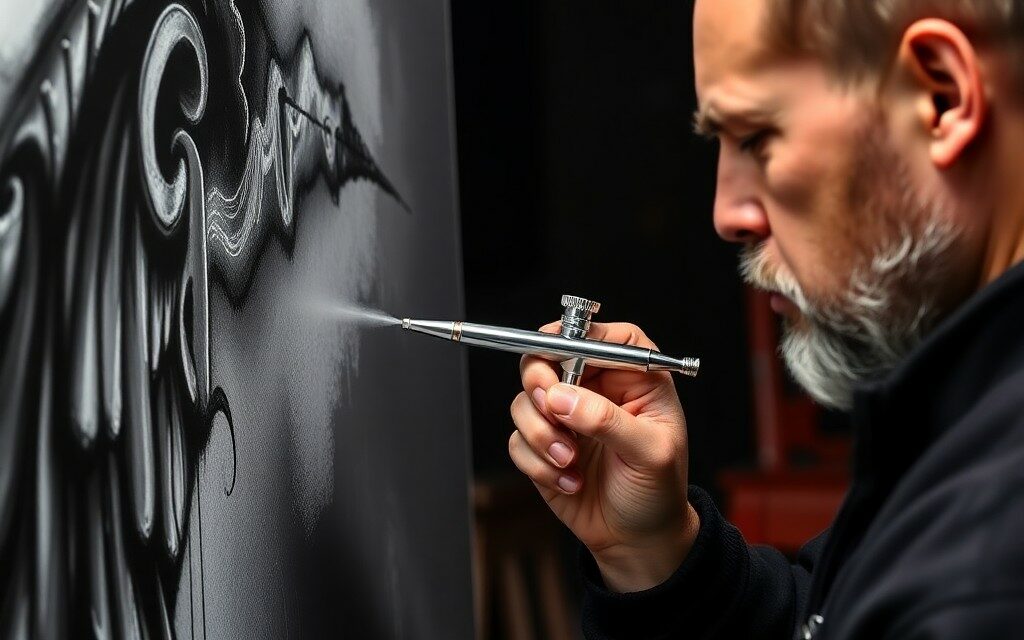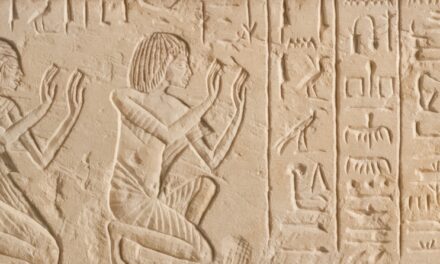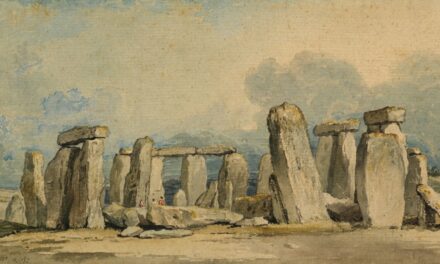The art of airbrushing has a rich and varied history that dates back to the late 19th century. The first airbrush was patented in 1879 by Francis Edgar Stanley, who created a device that allowed artists to apply paint in a fine mist. This invention revolutionised the way artists could work, enabling them to achieve smooth gradients and intricate details that were previously difficult to accomplish with traditional brushes.
The airbrush gained popularity in the early 20th century, particularly among illustrators and commercial artists who sought to create more lifelike images for advertisements and publications. As the technology evolved, so too did the techniques and applications of airbrushing, leading to its widespread use in various fields, including fine art, automotive painting, and even cosmetics. By the mid-20th century, airbrushing had become a staple in the world of art and design.
Artists like Alberto Vargas and Maxfield Parrish showcased the potential of airbrushing in their works, pushing the boundaries of realism and fantasy. The introduction of new materials, such as acrylic paints and more sophisticated airbrushes, further expanded the possibilities for artists. In the latter half of the century, airbrushing found its way into popular culture, with its use in T-shirt designs, murals, and even body art.
Today, airbrushing is not only a respected artistic technique but also a vital tool in various industries, from automotive refinishing to special effects in film and television. Its evolution reflects a continuous interplay between technology and creativity, making it an enduring medium for expression.
Summary
- Airbrushing has a rich history dating back to the 19th century, with its modern use in art and commercial applications evolving over time.
- Understanding the equipment and materials is crucial for successful airbrushing, including the different types of airbrushes, compressors, and paints available.
- Basic airbrushing techniques include controlling air and paint flow, creating gradients, and mastering freehand and stencil work.
- Advanced airbrushing techniques involve mastering intricate details, layering colours, and using masking and frisket films for complex designs.
- Choosing the right surface for airbrushing is important, with options including paper, canvas, metal, plastic, and fabric, each requiring different preparation and techniques.
- Safety precautions and maintenance are essential for airbrushing, including proper ventilation, protective gear, and regular cleaning of equipment.
- Exploring different styles and applications of airbrushing can include fine art, automotive customisation, body art, and model making, among others.
- Resources and further learning opportunities for airbrushing include workshops, online tutorials, books, and communities for sharing tips and techniques.
Understanding the Equipment and Materials
To embark on an airbrushing journey, one must first familiarise themselves with the essential equipment and materials that make this art form possible. At the heart of airbrushing is the airbrush itself, a precision tool that uses compressed air to atomise paint into a fine mist. Airbrushes come in various types, including single-action and double-action models.
Single-action airbrushes dispense paint with a fixed amount of air pressure, making them ideal for beginners who are just starting to explore this medium. In contrast, double-action airbrushes allow for greater control over both paint flow and air pressure, enabling more intricate designs and techniques. Additionally, a reliable compressor is crucial for providing a consistent airflow; many artists opt for quiet, portable models that can be easily adjusted to suit their needs.
In addition to the airbrush and compressor, the choice of paint is paramount in achieving desired results. Acrylic paints are commonly used due to their versatility, quick drying time, and ease of cleaning. However, artists may also experiment with other mediums such as watercolours or even specialised airbrush paints designed for specific applications.
Beyond paint, other materials such as masking tape, stencils, and various surfaces play a significant role in the airbrushing process. Masking tape can be used to create sharp lines or protect areas from overspray, while stencils allow for intricate patterns and designs. Understanding these tools and materials is essential for any aspiring airbrush artist, as they form the foundation upon which skills can be built and creativity unleashed.
Basic Airbrushing Techniques
Once equipped with the necessary tools and materials, beginners can start exploring basic airbrushing techniques that will serve as the building blocks for more advanced methods. One fundamental technique is the “fade” or gradient effect, which involves gradually transitioning from one colour to another. This can be achieved by adjusting the distance between the airbrush and the surface being painted; holding the airbrush closer will result in a more concentrated application of paint, while moving it further away will create a softer effect.
Practising this technique allows artists to develop their control over the airbrush and gain confidence in their ability to manipulate colour. Another essential technique is “stencilling,” which involves using pre-cut shapes or designs to create patterns on a surface. Stencils can be made from various materials such as plastic or cardboard and can be used repeatedly for consistent results.
To achieve clean edges when stencilling, it is important to ensure that the stencil is securely adhered to the surface to prevent any paint from seeping underneath. Beginners should also experiment with different paint pressures and distances to see how these factors influence the final outcome. Mastering these basic techniques not only enhances an artist’s skill set but also opens up a world of creative possibilities in their airbrushing journey.
Advanced Airbrushing Techniques
As artists become more proficient in their airbrushing skills, they may wish to explore advanced techniques that can elevate their work to new heights. One such technique is “freehand airbrushing,” which allows for greater artistic freedom and creativity. This method involves using the airbrush without stencils or guides, enabling artists to create intricate designs directly on the surface.
Freehand airbrushing requires a steady hand and keen eye for detail; therefore, practising control over paint flow and pressure is essential. Artists can experiment with layering colours and blending them seamlessly to achieve stunning visual effects that are unique to their style. Another advanced technique is “masking,” which involves covering certain areas of a surface to protect them from paint while allowing other areas to be painted freely.
This technique can be particularly useful when creating complex designs or when working with multiple colours that need to remain distinct from one another. Various masking materials are available, including liquid mask solutions that can be painted on and peeled off once dry. Additionally, artists can use tape or pre-cut masks for more precise applications.
Mastering these advanced techniques not only enhances an artist’s repertoire but also encourages experimentation and innovation within their work.
Choosing the Right Surface for Airbrushing
Selecting the appropriate surface for airbrushing is crucial for achieving optimal results in any project. Different surfaces can significantly affect how paint adheres and appears once dry. Common surfaces for airbrushing include paper, canvas, wood, metal, and even fabric.
Each material has its own unique characteristics; for instance, paper designed specifically for airbrushing often has a smooth texture that allows for even paint application without warping or bleeding. Canvas provides a more textured surface that can add depth to artwork but may require additional preparation to ensure proper adhesion of paint. When working on non-porous surfaces such as metal or plastic, it is essential to use a primer or base coat designed for these materials to promote better adhesion of paint.
Additionally, artists should consider the intended use of their artwork when selecting a surface; for example, pieces meant for outdoor display may require weather-resistant coatings or paints to withstand environmental elements. Ultimately, understanding how different surfaces interact with paint will empower artists to make informed choices that enhance their creative expression.
Safety Precautions and Maintenance
Engaging in airbrushing requires an awareness of safety precautions to protect both the artist and their workspace. One of the primary concerns is ventilation; working with paints and solvents can release harmful fumes that may pose health risks if inhaled over prolonged periods. Therefore, it is advisable to work in a well-ventilated area or invest in an appropriate spray booth equipped with exhaust fans to ensure proper airflow.
Additionally, wearing personal protective equipment such as masks or respirators can further safeguard against inhaling harmful particles or vapours during the painting process. Maintaining equipment is equally important for ensuring longevity and optimal performance of airbrush tools. Regular cleaning after each use prevents paint build-up that can clog nozzles and affect spray patterns.
Most airbrushes come with specific cleaning instructions; however, a general practice involves disassembling the airbrush and rinsing it with water or an appropriate cleaning solution designed for the type of paint used. Furthermore, keeping the compressor free from dust and debris will help maintain consistent airflow during operation. By prioritising safety measures and proper maintenance routines, artists can create a conducive environment for their work while prolonging the life of their equipment.
Exploring Different Styles and Applications of Airbrushing
The versatility of airbrushing allows artists to explore a myriad of styles and applications across various disciplines. In fine art, many contemporary artists utilise airbrushing techniques to create hyper-realistic portraits or surreal landscapes that captivate viewers with their intricate details and smooth transitions between colours. The ability to layer colours seamlessly enables artists to achieve depth and dimension that traditional painting methods may struggle to replicate.
Moreover, airbrushing has found its place in street art and graffiti culture, where artists employ this medium to create vibrant murals that convey powerful messages or celebrate cultural identities. Beyond fine art, airbrushing has numerous practical applications in industries such as automotive painting and cosmetics. In automotive refinishing, skilled technicians use airbrushes to apply custom designs or touch up paintwork with precision that ensures a flawless finish.
Similarly, in the world of cosmetics, professional makeup artists employ airbrush techniques to achieve an even complexion and flawless skin texture for clients on special occasions or photo shoots. The adaptability of airbrushing across different styles highlights its significance as both an artistic medium and a practical tool in various fields.
Resources and Further Learning Opportunities
For those eager to delve deeper into the world of airbrushing, numerous resources are available to facilitate learning and skill development. Online platforms offer a wealth of tutorials ranging from beginner basics to advanced techniques taught by experienced artists who share their insights through video demonstrations or written guides. Websites dedicated to art education often feature forums where aspiring artists can connect with peers, share their work, seek feedback, or ask questions about specific challenges they may encounter during their practice.
In addition to online resources, local workshops or classes provide hands-on experience under the guidance of skilled instructors who can offer personalised feedback and support. Many art supply stores also host events where artists can try out new equipment or learn about emerging trends in airbrushing techniques. Furthermore, books dedicated to airbrushing cover various topics such as colour theory, composition, and specific applications within different artistic styles.
By exploring these resources and opportunities for further learning, aspiring airbrush artists can cultivate their skills while discovering new avenues for creative expression within this dynamic medium.
If you’re intrigued by the airbrushing technique and its unique application in modern art, you might also find the exploration of Pop Art quite fascinating. Pop Art, like airbrushing, revolutionised perceptions of art by incorporating elements from popular culture and mass media. To delve deeper into this vibrant art movement and understand its impact on contemporary art practices, you can read more about it here. This article provides a comprehensive introduction to the key figures and iconic works that define Pop Art, offering insights that complement your understanding of airbrushing in a broader artistic context.




